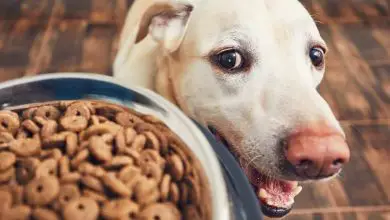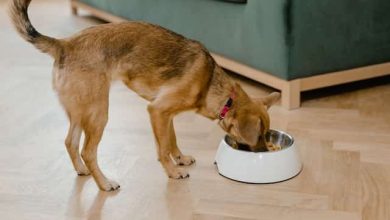How to Bath a Puppy


Introduction
Bathing is an essential part of caring for a puppy’s overall hygiene and well-being. Regular baths help keep their coat clean, remove dirt and odors, and promote healthy skin. Establishing a positive bathing routine early on can make the experience enjoyable for both you and your furry friend.
Preparing for the Bath
Before you begin the bathing process, it’s important to gather all the necessary supplies. This includes puppy-specific shampoo, towels, a brush or comb, a non-slip mat for the bathing area, and treats for rewards. Choose a location that is easy to clean and safe for your puppy, such as a sink, bathtub, or a specially designed puppy bathing tub.
Step-by-step Guide to Bathing a Puppy
- Introducing your puppy to water: Start by slowly introducing your puppy to the sound and sight of running water. Encourage them with treats and praise to create positive associations.
- Wetting the puppy’s coat: Use lukewarm water to wet your puppy’s coat thoroughly. Avoid spraying water directly onto their face to prevent discomfort.
- Applying puppy-specific shampoo: Apply a small amount of puppy-specific shampoo onto your hands and gently lather it into your puppy’s coat. Ensure the shampoo is mild and doesn’t contain any harsh chemicals that could irritate their sensitive skin.
- Gently massaging and scrubbing the coat: Use your fingers or a soft brush to massage the shampoo into your puppy’s coat, paying attention to areas like the back, belly, and paws. Be gentle and avoid pulling or tugging their fur.
- Rinsing thoroughly: Rinse your puppy’s coat with lukewarm water until all the shampoo is removed. It’s important to be thorough to prevent any residue from causing skin irritation.
- Drying the puppy: Use a soft towel to gently pat your puppy’s coat dry. Avoid rubbing vigorously, as it can damage the hair or cause tangles. If your puppy is comfortable with it, you can also use a blow dryer on the lowest heat setting, keeping it at a safe distance.
Tips for a Successful Puppy Bath
- Using positive reinforcement: Throughout the bathing process, use treats, praise, and encouragement to reward your puppy for their cooperation and good behavior. This will help create positive associations with bath time.
- Keeping the water temperature comfortable: Ensure the water is neither too hot nor too cold. Use lukewarm water that is comfortable to the touch. Remember, puppies have sensitive skin, so it’s important to avoid extremes in temperature.
- Protecting the puppy’s ears and eyes: To prevent water from entering your puppy’s ears, you can place cotton balls gently in the ear canal. Additionally, be cautious not to get water or shampoo in their eyes, as it can cause discomfort or irritation.
- Being patient and calm throughout the process: Bathing a puppy can be challenging, especially if they are nervous or resistant. Stay calm, speak softly, and maintain a patient and reassuring demeanor. This will help your puppy feel more at ease during the bath.
After-Bath Care
Once you’ve completed the bathing process, there are a few additional steps to ensure your puppy’s well-being:
- Checking the puppy’s ears and paws: After the bath, gently inspect your puppy’s ears for any signs of redness, irritation, or excessive moisture. Similarly, examine their paws for any foreign objects or debris that may have become lodged between their toes.
- Brushing and grooming the coat: Once your puppy is dry, use a soft brush or comb to gently remove any tangles or loose hair from their coat. Regular brushing not only helps keep their fur in good condition but also provides an opportunity for bonding and bonding with your puppy.
- Rewarding the puppy for a positive experience: After the bath and grooming session, reward your puppy with praise and treats to reinforce the positive experience. This will help them associate bath time with positive feelings and make future baths easier.
Frequently Asked Questions (FAQs) about puppy bath
How often should I bath my puppy?
The frequency of bathing depends on your puppy’s breed, activity level, and coat type. Generally, bathing once every 4-6 weeks is sufficient for most puppies. However, avoid over-bathing as it can strip the natural oils from their skin.
Can I use human shampoo on my puppy?
No, it is not recommended to use human shampoo on puppies. Human shampoos are formulated for a different pH level, and the ingredients may be too harsh for their delicate skin. Use a mild, puppy-specific shampoo instead.
What if my puppy is afraid of water?
If your puppy is fearful of water, take a gradual approach to introducing them to bathing. Start with small amounts of water and reward them for their bravery. Make the experience positive and gradually increase their comfort level over time.
See also: Iowa Dog Breeders
Should I use a blow dryer to dry my puppy?
If you choose to use a blow dryer, set it to the lowest heat setting and keep it at a safe distance from your puppy. However, some puppies may find the noise and sensation of the blow dryer distressing. In such cases, it’s best to stick to towel drying.
Can I bath my puppy before vaccination?
It’s generally safe to bath a puppy before vaccination, but it’s recommended to consult with your veterinarian first. They can provide specific guidance based on your puppy’s health and vaccination schedule.
Conclusion
Regularly bathing your puppy is an important part of their overall care. By following the steps outlined in this guide, you can ensure a safe and enjoyable bathing experience for both you and your furry companion. Remember to approach bath time with patience, positivity, and a gentle touch. Establishing a consistent bathing routine will not only keep your puppy clean but also contribute to their overall health and well-being.
If you have any further questions or concerns about bathing your puppy, consult with your veterinarian for personalized advice and guidance. They can provide additional tips based on your puppy’s specific needs.




